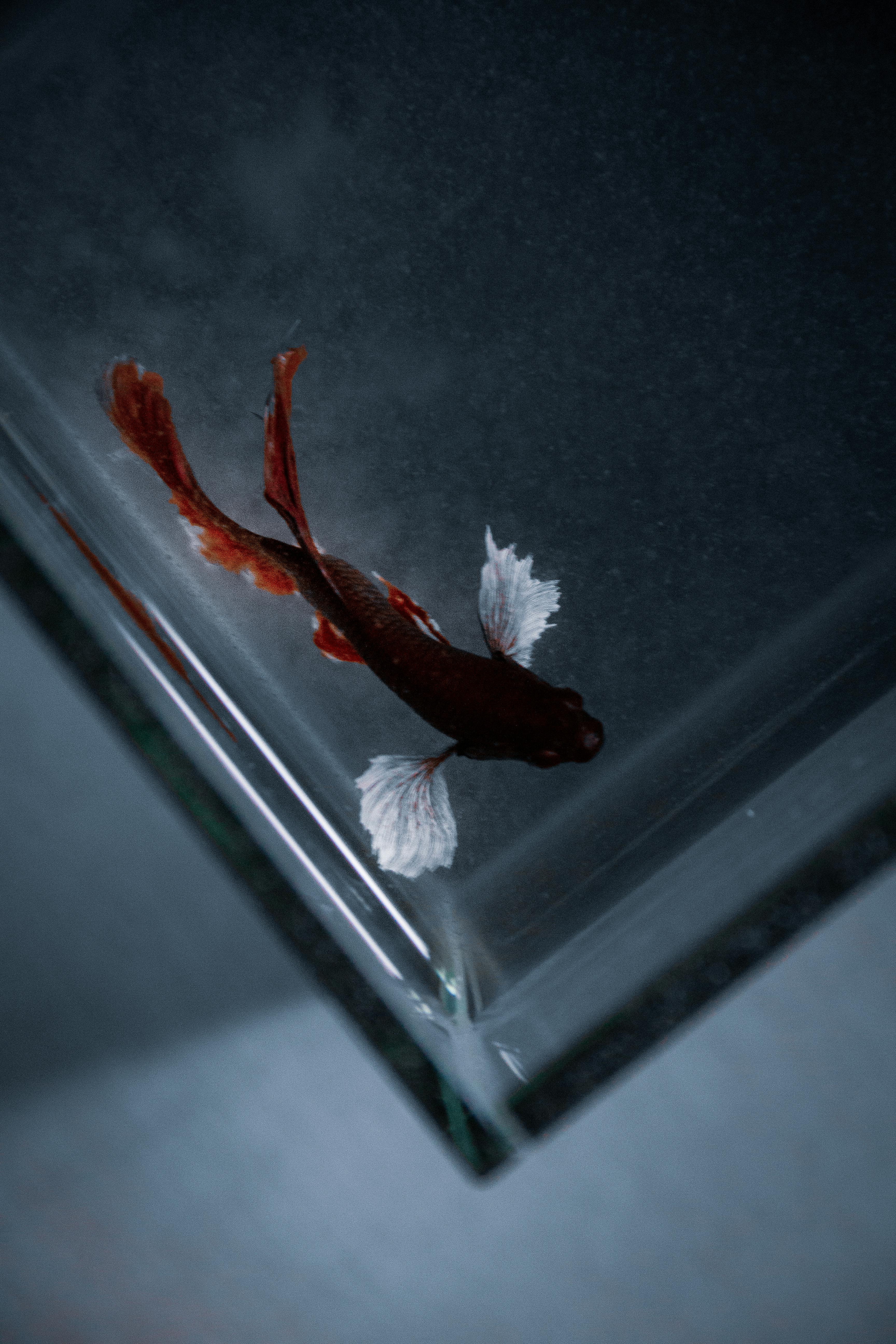Smart Ways to Care for Female Betta Koi Fish in 2025
Caring for female koi betta fish requires a blend of knowledge, attention, and commitment. These vibrant fish not only add color and charm to your aquarium, but they also embody fascinating traits that captivate enthusiasts. In 2025, the importance of understanding the specific needs of koi bettas has become even more crucial, as dedicated care correlates with their overall happiness and longevity.
Female koi bettas exhibit a unique blend of behavioral nuances and color patterns, making them a popular choice for both novice and experienced fish keepers. This article aims to provide a comprehensive guide on betta fish care, focusing on their environmental needs, feeding schedules, and breeding tips. By the end of this article, you will have a solid foundation to create the ideal habitat for your koi bettas, ensuring they thrive in your home aquarium.
Key takeaways include understanding the koi betta's habitat requirements, recognizing common health issues and their prevention, and exploring the significance of genetics in enhancing their unique color patterns. Let’s dive into the essential aspects of caring for your female koi bettas.
Creating the Perfect Betta Fish Tank Environment
To ensure a thriving habitat for your female koi betta, it's crucial to set up a tank that meets their specific needs. The ideal betta fish tank should mimic their natural environment while providing a safe space for them to explore and thrive.
Tank Size and Setup
A minimum of 5 gallons is recommended for a female koi betta. This size allows for ample swimming space and the addition of plants and decorations that are essential for their well-being. A well-planted tank not only beautifies the aquarium but also provides hiding spots, which are necessary for the fish to feel secure.
Make sure to include a top-quality filtration system to maintain water quality, as bettas are sensitive to pollutants. Regular water changes of 25-30% every two weeks will help in sustaining good water conditions and preventing disease. It's also important to position the aquarium away from direct sunlight to prevent algae growth and maintain stable temperatures.
Water Conditions and Temperature
Maintaining optimal water conditions is vital for the health of your koi betta. The ideal temperature range for koi bettas is between 76°F to 82°F (24°C to 28°C). Using a reliable aquarium heater will aid in achieving and maintaining this temperature range, thereby avoiding fluctuations that can stress your fish.
Additionally, the pH level of the water should be between 6.5 to 7.5, which is suitable for bettas. Test kits are widely available and useful in monitoring the water conditions to ensure they remain stable.
Lighting and Aesthetics
Proper lighting plays a significant role in the visual appeal of your koi betta tank. LED lights that can simulate a natural day/night cycle will enhance the colors of your bettas and promote their digestion. Moreover, these lights are energy-efficient and long-lasting, making them a cost-effective choice for betta owners.
Decorations such as live plants (anubias, Java fern), caves, and driftwood not only create an aesthetically pleasing environment but also promote mental stimulation and wellness. Just remember to avoid sharp or rough-edged ornaments that could injure your fish.
Building on these fundamental tank essentials reinforces safe and healthy living conditions for your koi betta. With a well-prepared environment, your focus can shift to feeding and nutrition.
Essential Nutrition for Betta Fish Health
Just like any pet, providing a balanced diet is crucial for the health and longevity of koi bettas. Understanding the types of food available and how to feed them appropriately can make a significant difference in their overall well-being.
Best Foods for Koi Bettas
Koi bettas thrive on a protein-rich diet, which is essential for their growth and color enhancement. High-quality pellets specifically formulated for bettas should form the base of their diet. These pellets are often enriched with vitamins to support fish health.
Incorporating live or frozen foods such as brine shrimp, bloodworms, and daphnia can also benefit your fish. These foods mimic their natural diet and are excellent for stimulating their hunting instincts as well as providing substantial nutrition.
Feeding Schedule and Amount
Establishing a feeding schedule is important. Feeding your female koi betta 2-3 times a day in small amounts can prevent overfeeding, which is a common mistake that can lead to water quality issues and obesity. A good rule of thumb is to offer only as much food as the fish can consume in about 2-3 minutes.
Common Feeding Mistakes to Avoid
Many new betta owners might be tempted to feed their fish too much, thinking more food means better health. In reality, this can lead to internal diseases, bloating, and death. Always take care to match their feedings to their appetite and watch for any uneaten food that could degrade water quality.

By understanding these critical elements of feeding your koi bettas, their vitality and energy will flourish. Next, we delve into their behavior to further enhance your interaction and care techniques.
Understanding Betta Fish Behavior
Behavior can tell you a lot about your betta's health and happiness. Being aware of the signs they display can help you provide better care and improve their environment.
Social Interactions and Compatibility
While bettas are well-known for their aggressive nature toward other males, female koi bettas can sometimes live peacefully in community tanks, given the right conditions. However, be cautious about tank mates; ensuring compatibility with species such as tetras or corydoras may help prevent stress and aggression.
Signs of Stress in Bettas
A stressed betta may display behaviors such as hiding, excessive fins clamping, and refusal to eat. Keeping an eye on these warning signs can help you address any potential issues before they escalate. It is crucial to eliminate stressors such as medication, water quality, or aggressive tank mates.
Breeding Behavior Insights
Understanding breeding behavior is essential, especially if you plan on breeding koi bettas. Watching for signs of courting behaviors, such as the male flaring his fins and the female displaying a stripped pattern, can indicate that they're ready to breed. Create a breeding tank that mimics natural conditions by introducing plants that serve as spawning sites.
By observing these aspects of betta behavior, you can establish a rewarding companionship with your fish. The next section will cover health considerations vital to sustaining your koi betta's longevity.
Maintaining Betta Fish Health and Well-being
Maintaining the health of your female koi betta should be a high priority. Regular monitoring and preventative care can help in minimizing health risks.
Common Betta Fish Diseases
Knowledge of common illnesses, such as fin rot, ich, and velvet, can prepare you for addressing any health concerns. Symptoms like discoloration, lesions, or abnormal swimming behaviors should prompt a closer inspection and possible treatment.
Preventative Health Care Strategies
Regular water quality checks, proper feeding, and appropriate tank conditions play significant roles in disease prevention. Moreover, consider adding aquarium salt during treatment scenarios, as it can support gill function and help in the recovery of some diseases.
What to Do When Your Betta is Sick
When faced with a sick betta, isolation in a hospital tank can prevent contagious diseases from spreading to other fish. Consult with a veterinarian familiar with fish health for the best treatment options. Timely intervention is critical to avoid severe health issues.

By prioritizing your betta's health and nurturing them, you ensure they will thrive for many years. Next, let’s explore the exciting world of koi betta breeding.
Exciting Aspects of Koi Betta Breeding
Breeding koi bettas presents an opportunity to observe their unique behaviors while producing stunning offspring. However, there are important tips and techniques to consider to ensure a successful breeding process.
Understanding Koi Betta Genetics
Koi bettas come in various stunning colors and patterns, often resulting from genetic traits inherited from their parents. Learning about koi betta genetics can help in selecting breeding pairs that enhance desired traits such as vibrant coloration and pattern diversity.
Breeding Equipment and Setup
Setting up a breeding tank with gentle filtration yet effective oxygenation is crucial. Plants like spawning mops can provide safe areas for females to deposit eggs. Water conditions should closely mirror those of their primary tank to facilitate comfort during breeding.
Determining Breeding Readiness
Males and females should be conditioned for breeding by providing a nutritious diet and keeping them in optimal health. Look for males displaying bubble nests and striped patterns on females to indicate readiness for breeding.
Ultimately, understanding the intricacies of koi betta breeding fosters an appreciation for their beauty and behavior. Now let's address some common questions regarding betta fish care!
Q&A Section: Common Questions About Betta Fish Care
1. How often should I feed my koi betta?
Feed your koi betta 2-3 times a day in small amounts to prevent overfeeding and ensure their health.
2. What tank mates are suitable for female koi bettas?
Consider peaceful species such as tetras or corydoras as potential tank mates, but always monitor interactions for compatibility.
3. How can I tell if my betta is sick?
Watch for symptoms like discoloration, lesions, or abnormal swimming patterns, indicating that you should further inspect their environment and health.
4. What is the lifespan of a koi betta?
With proper care, koi bettas can live up to 3-5 years, sometimes longer in ideal conditions.
5. How can I improve my betta's colors?
Nutrition plays a vital role in enhancing their color. Feed high-quality pellets designed for bettas and offer live or frozen foods to promote vibrancy.
With the right care and understanding, your female koi bettas will bring beauty and joy to your home. Enjoy the fascinating journey of keeping these delightful fish!
